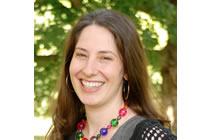Interrupting Whiteness: Hatzaad Harishon, Black Jews, and the Expansion of Jewish Identity

Interrupting Whiteness: Hatzaad Harishon, Black Jews, and the Expansion of Jewish Identity
Hatzaad Harishon (‘The First Step’)—a biracial non-profit organization founded by white, liberal Jews—was the first organization specifically formed to foster interaction and unity among the black and white Jewish communities in New York. Hatzaad Harishon existed from 1964-1972, emphasized the concept of klal Yisrael (‘Jewish community’) and encouraged identification with the modern nation-state of Israel to facilitate improved relations between the races. This talk shows how Hatzaad Harishon and their youth group demonstrate both the success and limits of what Kenneth Burke terms “identification.” Employing a Zionist frame for identification, the organization helped create imaginative and geographic space that connected New York’s Black and white Jews. I interpret Hatzaad Harishon's founding and development through the mid-late 1960s as an examplar of Burkean identification. Unfortunately, success could only be achieved as long as black Jews conformed to the standards established by the mainstream Jewish community. While Hatzaad Harishon worked hard to “expand the scope” of Jewish peoplehood so that black faces were recognized as part of it, the organization could not make the next step, which would have allowed black Jews to shape and expand what counts as legitimate Jewish culture—to allow invention and constitution to take place alongside identification. This paper argues that Hatzaad Harishon’s trajectory calls attention to our need for a new model of rhetorical invention and success, one that I term “interruptive invention.”
Janice W. Fernheimer is Assistant Professor of Writing, Rhetoric, and Digital Media and Interim Director of the Interdisciplinary Program of Jewish Studies at the University of Kentucky (UK), where she teaches courses in Jewish Rhetorical Studies and rhetoric, technology, and pedagogy. Her research focuses on questions of identity, invention, and cross-audience communication and has appeared in Rhetoric Society Quarterly, College English, Argumentation and Advocacy,Computers and Composition Online, Currents in Electronic Literacy, AJS Perspectives, and the Journal of Business and Technical Communication.Additionally, she guest-edited the special issue of College English, “Composing Jewish Rhetorics,” published in July 2010, and along with Professor Michael Bernard-Donals she is co-editing the collection Jewish Rhetoricsunder contract with Brandeis University Press. Her book, Arguing Black Jewish Identity: Hatzaad Harishon and Interruptive Invention, is forthcoming from University of Alabama Press in 2013.

